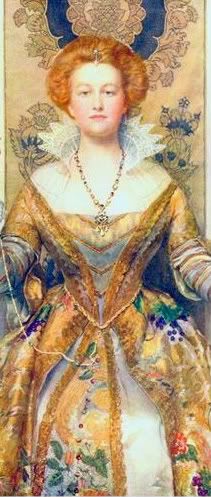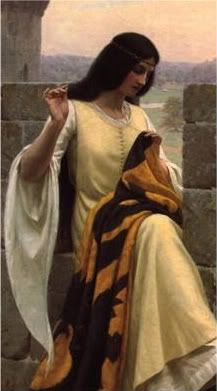Instructions Given for the
Discovery and Eradication of Apostasy
by Justin Evans
1. Justification(i)
Some jobs
scream for committee―
Say, the
delegation of authority in the education
of our
children, labor according to ability,
building
an irrigation ditch to the Union Bench, or
a mud
wall for practicality and protection.
But there
comes a time when God comes first,
when the
consensus of one community should be
to fall
behind one man, submit to a greater voice, where
the
formation of lots, the division of the land
among the
families according to need must be heeded.
When the
requirement of obedience cannot be met
there is
no room for a split amongst the saints,
no place
for the voice of dissent to reside. Either
one must
go, or the other, and there can be no accord.
2. Procedure(ii)
Because there can be no trust between the faithful
and those who will not heed the call, secret meetings
will be held. Confederates will be appointed
to infiltrate their numbers for the purposes of discovery.
These men will report from time to time upon
the disposition of the unfaithful, guiding them
to their destruction at the appointed hour. They will
be certain to give signs and tokens to verify their true faith.
We must always prepare for the taking up of the sword
when called by God or his appointed prophet. There can be
no wavering, no departure without correction.
This done to preserve the order in accordance with
the Living Prophet's direction, as these times call out
for obedience and preservation amongst the saints.
2. Procedure(ii)
Because there can be no trust between the faithful
and those who will not heed the call, secret meetings
will be held. Confederates will be appointed
to infiltrate their numbers for the purposes of discovery.
These men will report from time to time upon
the disposition of the unfaithful, guiding them
to their destruction at the appointed hour. They will
be certain to give signs and tokens to verify their true faith.
We must always prepare for the taking up of the sword
when called by God or his appointed prophet. There can be
no wavering, no departure without correction.
This done to preserve the order in accordance with
the Living Prophet's direction, as these times call out
for obedience and preservation amongst the saints.
3. The Tragic End of Wm. & Beason Parish
"Old arguments die hard and they can
travel
the length of a
continent if they are nurtured."
- James Albee Cox, 1855
Staring
up at the night
desert
skies
the final
moments
of a
man's life entangle
with the
dark
silhouette
of clouds
shape
shifting
take up
the soul into its wisped
ethereal
composite
of
humidity and vapor
carried
eastward again
across
the plains
4. The Testimony of Abraham Durfee (Found
Poem)(iii)
Bird was lying in the corner of the fence
as Parrish and Potter walked along the fence.
Bird said he shot Potter, whom he supposed
to be Parrish; that after, he wanted
to know if it was him that had shot; he said
Parrish had his gun in his hand, laid it
down,
and they (Parrish and Bird) clinched
together.
As they clinched Bird drew his knife, worked
the best he could in stabbing Parrish. Bird
said
after Parrish was down, he gave him a lick
which cut his throat. He never said anything
about
any other persons being there helping him.
Bird said, after he got through with the old
man
he took Potter's gun and his own, got in the
corner
of the fence again to be ready for us. He said he
laid
there till we came up—the Parrish boys and
myself.
Bird fired and he saw one fall. He was afraid
the person he had shot would run off, fired
again.
When Orrin and I started, said he came out
from the fence and shot at Orrin. Said he saw
me
or he supposed it was me. When I ran into the
hollow
he asked me if I heard him call; I told him I
did.
He wanted to know why I did not come to him;
I told him I did not like to, that I did not
know
what it meant. The next-morning after the
murder
I heard Bishop Johnson and Bird talking
together.
He blamed Potter and Bird for not going
further away with them. The Bishop said he
wanted
I should be satisfied about the affair, not
tell
who was in it― that if I did, they would serve
me
in the same way. I did not know the Parrishes
were to be killed. I sup-posed from what
Potter told me they were to be brought back.
In the second meeting I attended there were
some
what wanted to see blood run. It was
Wilson Bird that called me. Bishop Johnson
some two or three days before the murder told
me
take a gun out with me. The Parrishes had no
gun.
The morning of the hearing, myself and Orrin
Parrish
before John M. Stewart, I knew Bird was the
man
but I was afraid to state it. Bishop Johnson told
me
what evidence I should give, and he said if I
told
what I knew, they would send me the same way.
I spoke what the Bishop told me to say.
* * *
(i)
"On 'the 14th of March. 1857, occurred the first tragedy to blot our fair
history. We would fain pass over this dark spot, and let the foul crime be
blotted from the minds of men. but like Banquo's ghost—'it will not down.' The
elder had been a Mormon, and in the early history' of the church, his name had
figured prominently. The son had also belonged to the church, but for some
cause, had. like his father, withdrawn from the faith. They intended going to
California and had started on their journey, it is said, that fateful
night." Don Johnson, A Brief History of Sprinville (Springville:
William F. Gibson, 1900), 40-41.
(ii) "They nominated persons to learn when the Parrishes
were going to leave. My name (Abraham Durfee) was mentioned, and I objected to
it. Then they mentioned Potter's name; then the Bishop decided that both Potter
and myself should try to learn when the Parrishes were going to leave the
Territory. The Bishop said he did not wish any one to decline when he was
called upon. I then told the Bishop that I would do as well as I knew how; and
Potter assented to the same; I can't recollect that Potter made any
reply." Abraham Durfee, "The Mormon Murders," New
York Tribune, October 17, 1871.
(iii)
Durfee, "The Mormon Murders," New York Tribune, October
17, 1871.
* * *
Justin Evans lives in rural Nevada with his wife and sons, where he teaches at the local high school. His books include four chapbooks and a full length collection of poetry. His most recent is the chapbook Friday in the Republic of Me (Foothills Press, 2012). His book Hobble Creek Almanac is forthcoming from Aldrich Press. Recent poetry has been published in Weber: The Contemporary West and diode.
What do you think is the most important part of a historical
fiction poem?
The poem
needs to serve the aspects of poetry and good writing first and foremost.
After, a historically themed poem should make the reader question how much of
the work is art and how much is reality. The reader should not come away with
any absolute answer for that question.










0 comments:
Post a Comment